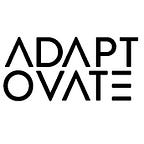Are we all heading in the same direction now we are working remotely?
By Paul McNamara — Co-founder, Partner and Managing Director at ADAPTOVATE
Businesses are having to adapt faster than ever to stay ahead or even survive in the dynamic environment created by COVID-19 and will need everyone working together on the right things to have any chance of succeeding.
However, the ability for individuals to stay aligned and work cohesively is even harder in the transition to remote working, with an increasing number of distractions, slower communication channels, and technological hiccups.
- People are now working with more flexible schedules, making it difficult to find time to align and coordinate
- Priorities change constantly, with teams often having to shift focus quickly and work on things they may not be familiar with
- Effective collaboration is harder without face-to-face interactions, relying more on written over verbal communication, which many of us are less effective at
- Individuals are now required to manage their own work schedules more, without much oversight
- Leaders find it more difficult to know what their teams are working on
In normal circumstances, we often use Agile ways of working to create strong alignment to enable teams to work autonomously. We now need the reverse; we have more autonomous teams that need strong alignment to ensure they are working on the right things towards the desired outcomes. We need to get our remote teams working with an aligned purpose, and leveraging technology, to collaboratively solve the hard problems. A twist on the Agile manifesto we need
“Individuals and interactions leveraging processes and tools”
I have collated some lessons from helping remote teams become high functioning teams which we can get inspriation from:
Improve alignment to strategic priorities
- Establish a virtual mission control. Have a single place where everyone can go to see what is important, the progress we are making, and have data driven discussions. ADAPTOVATE have created a free infographic about mission control here: https://www.linkedin.com/posts/adaptovate_introducing-the-mission-control-infographic-activity-6662946185604665345-o5hY
- Be ready to reprioritise the work rapidly. As conditions are changing day-to-day, teams must be ready and accepting to reprioritise and adjust their goals to maximise opportunities and create value for the customer. It may be required to set up dedicated teams focused on business continuity and respond directly to the changing business, economic and government dynamics. Design the work to try to have smaller groups of people working together in order to rapidly build connection and trust, reduce the number of handoffs, increase productivity, and strengthen accountability.
Strengthen autonomy and collaboration
- Create dedicated ‘co-location’ time. It is often difficult to switch off when we don’t have the boundaries of going into the office, so we need to be even more respectful of everyone’s time. Schedule time for teams to work together in ‘co-location’ sessions with the video on in the background while we are working. Use this time for sparking new ideas, developing content, testing ideas with colleagues, during specific days of the week.
- Focus on personal connections. In the world of remote first, we may feel more isolated and the typical water cooler conversations you would normally have in a work environment no longer exists. It’s important to continue to foster a sense of collegiality in the workplace, making it essential to continue to have those informal interactions. You could set up one-on-one coffee catch ups between team members, regular morning walks on video and Friday social events, fostering an open space where individuals can connect with each other freely.
- Always use video. Personal connections are reinforced when teams see each other on a regular basis. Instead of audio calls, make video conferencing the default. One client, a large bank, set up a ‘wormhole’-a video call that live-streamed another team working halfway around the world. They positioned the video screen to make it look and feel like the remote team was working on the other end of the table. This allows you to replicate the interactions as if you were sitting in the same office, asking those quick 30-second questions whenever needed.
- Support the new remote culture. An inherent consequence of remote working is the technology blunders that many will face. Ensure the members in your team are comfortable with the technology tools your organisation is using and make it easy for individuals to adopt. This might be as simple as sending out the dial-in number and link to the video conference, having a dedicated person screen sharing, or setting up your video on the whiteboard prior to the meetings. When scheduling meetings, also be mindful of time zone differences. These are simple steps but go a long way towards making people feel that agile ceremonies — such as stand-ups and retrospectives — can function seamlessly.
Better leverage technology and tools
We are now working in a new world where remote working is becoming the norm and organisations must adapt. We can use it as an excuse for why Agile won’t work, or embrace it, harness its potential, and reap the benefits. If you take the latter approach, your team will thank you.
ADAPTOVATE have also created a free 24-page guide and infographic on how to make remote working successful which can be found at this link: https://adaptovate.com/making-remote-working-successful/
Published By
Originally published at https://www.linkedin.com.
